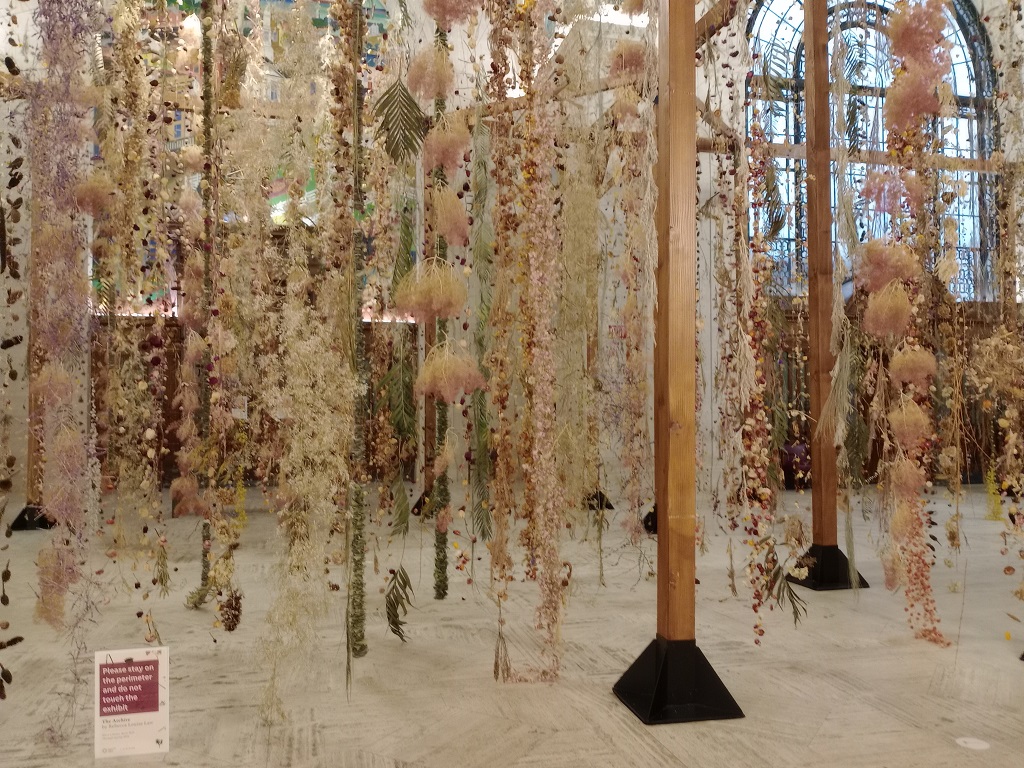Scott went to a whiskey tasting with a friend, so I drove everyone downtown. Anya and I visited the main branch of the Cleveland library (where she happily read a few books until it was time to pick them up). Wandering around the building, though, we found a few art installations. This one was really cool — and would be a neat way to dry herbs!
Tag: art
On art … 2
Art is a way of seeing something worthwhile in everything. A way of understanding and experiencing the world. I remember seeing a painting of an old barn next to an overgrown field. It’s something I’d have dismissed if I’d seen it in person — just a collapsing old building. But the way the artist painted it? The dilapidation and decay were stunning. That’s how I’ve viewed the world ever since — from urban slums to Queen Mary’s gardens, there’s something wonderful to be found if you try.
It’s also a gateway to learning. It’s historical (how did someone think to slice up the stalk of a papyrus plant, overlay them, wet them, and allow them to dry to make a writing surface!?! How different would the world be if we were lugging around cuneiform tablets), scientific (how your eyes perceive frequencies as colors are combined, how rocks break as you carve them, visualizing the head of a drum as a song is played) … I’ve taught my daughter a lot of more traditionally “educational” things by making or experiencing art.
And it’s enjoyable — something doesn’t have to have a practical utility to be worthwhile.
On art
All levels of school have wrong approaches teaching art. I got the “Art History” memorize-these-slides approach in Uni — it is a about as effective an approach to putting someone off art as I could conceive.
My experience with primary school art education has had a focus on semi-realist movements. Worse, in the lower grades? Art seems to be a fancy name they’ve decided to give “fine motor skill practice”. There’s no attempt to convey that art has historical meaning and purpose (think Hogarth Beer Street / Gin Lane), is emotional communication, captures energy … that there’s a LOT to experience in art, and there’s a lot of yourself you put into art for others to experience. And this approach leads to kids thinking they are bad at art … which, yeah, you can have difficulty expressing yourself. But that’s got nothing to do with hand-eye coordination.
The idea of collaborative art is interesting — and it’s something that’s completely missing in art education. I was shocked the first time I was at an artist’s studio and saw all of the people doing Chihuly’s glasswork. A second of reflection, I realized there was no way one dude made the giant tree of lights from the White House Christmas display or all of the glass bubbles at the Kew Gardens. But I totally never realized there was an artist equivalent of a sous chef.
I’ve seen some art clubs with large projects (mural on the side of the school) take this approach, but that’s been a more pragmatic thing based on the project size than any attempt to include collaboration in art education. With more mature participants, I totally see how a collaborative approach would be beneficial. I’m trying to think of some way to pitch it to kids my daughter’s age (early elementary school) where “Ken is good at trees” gets heard as either “you aren’t good at trees” or “trees are super awesome, and I’m letting Ken do them”. Maybe talking through it and seeing what everyone’s into — like draw a base scene and then have each kid draw their favorite animal.
